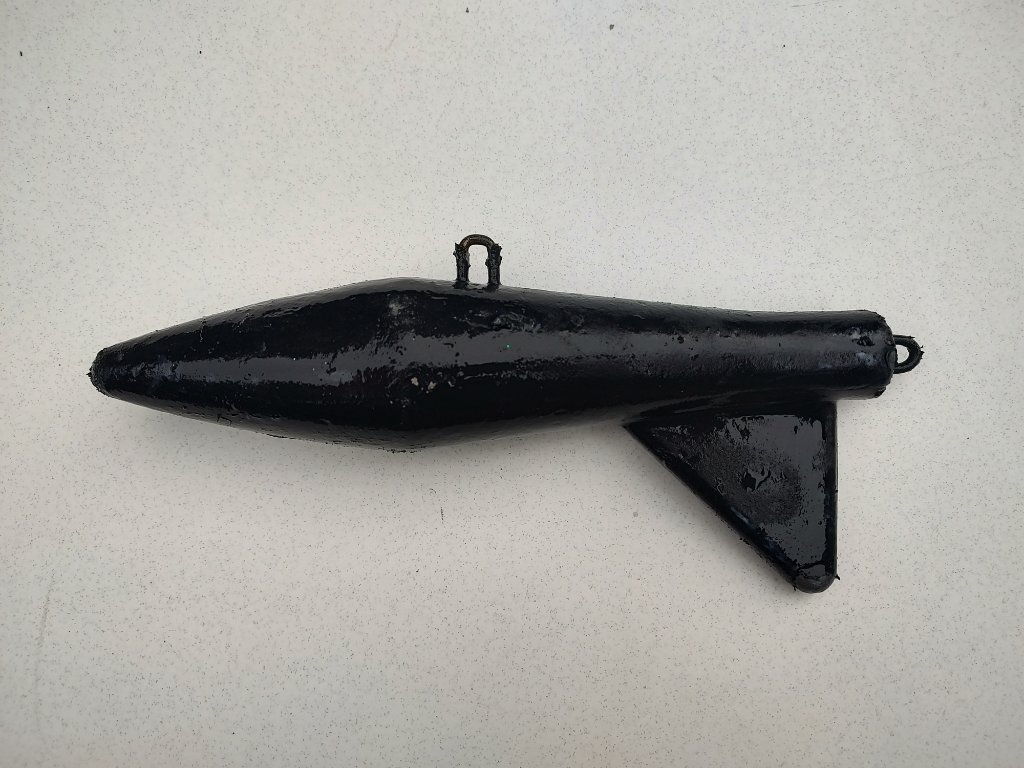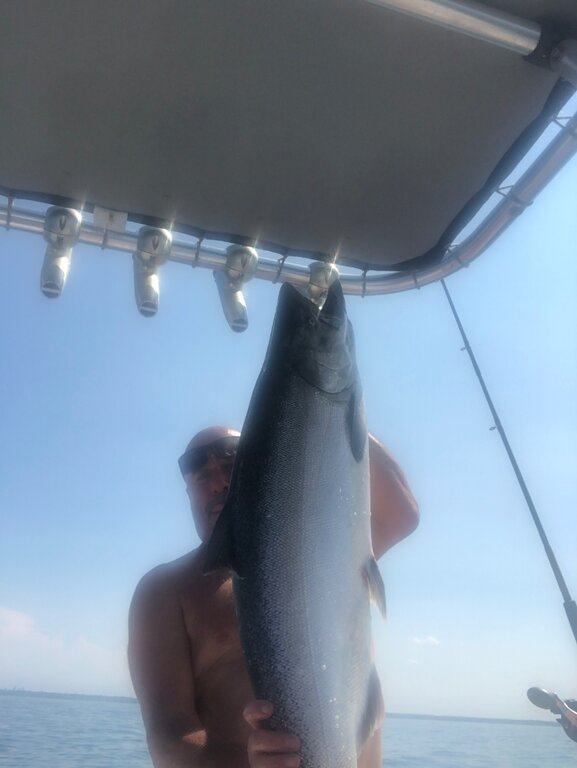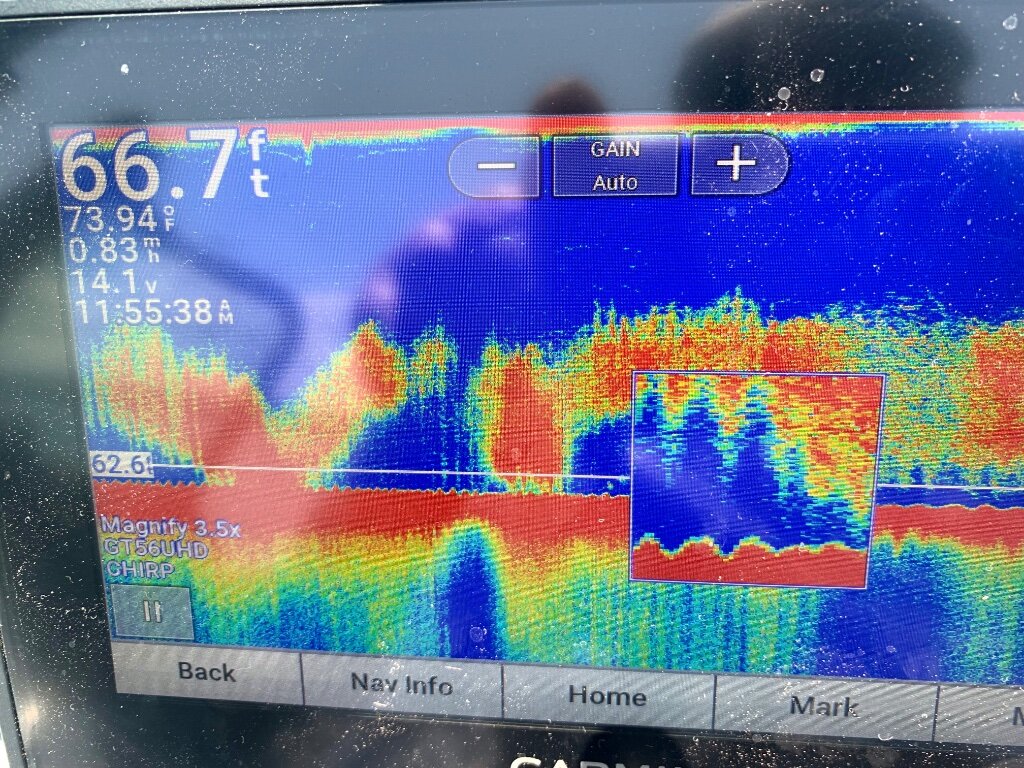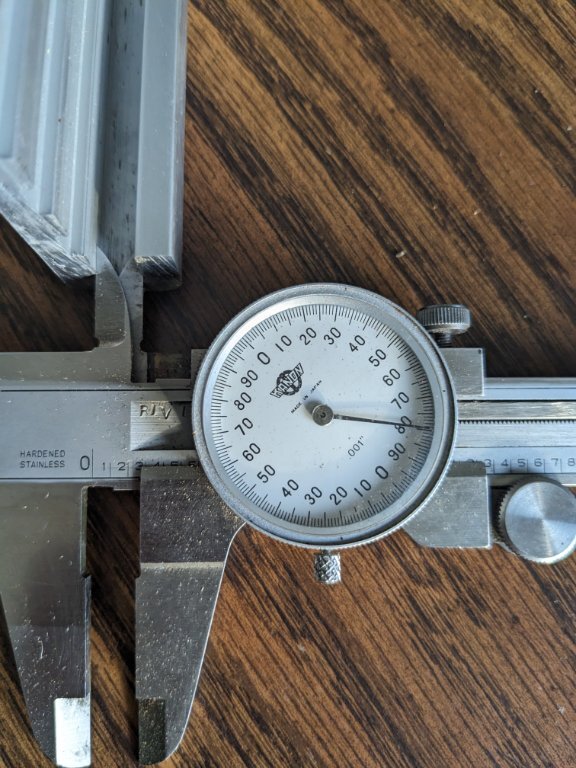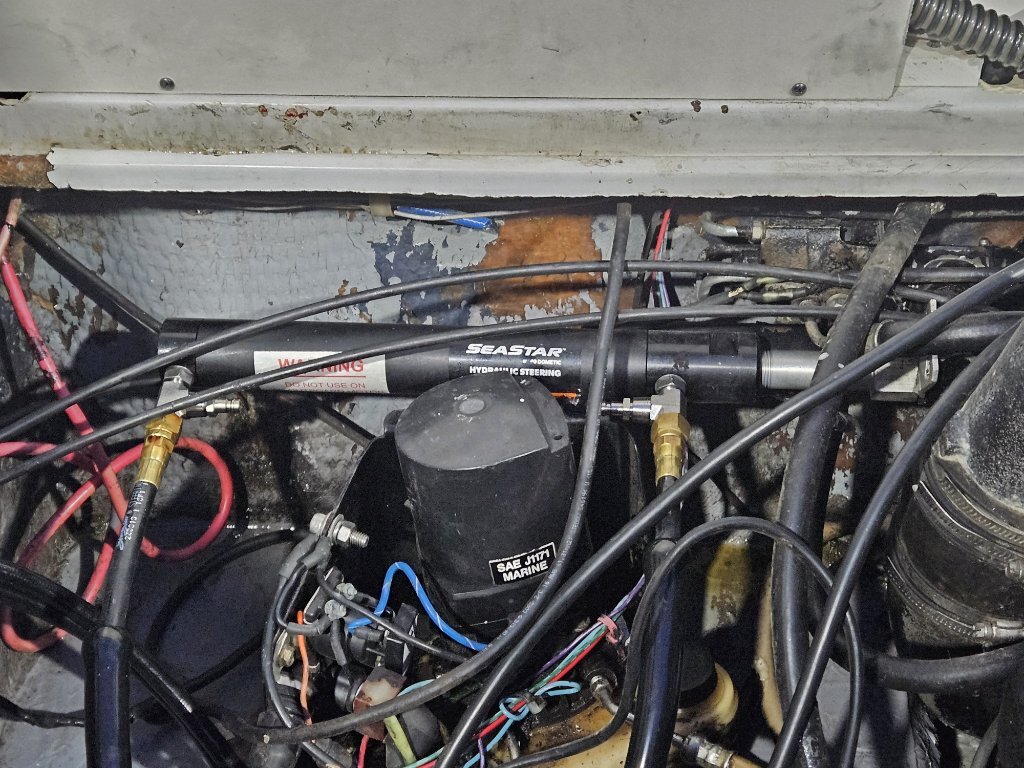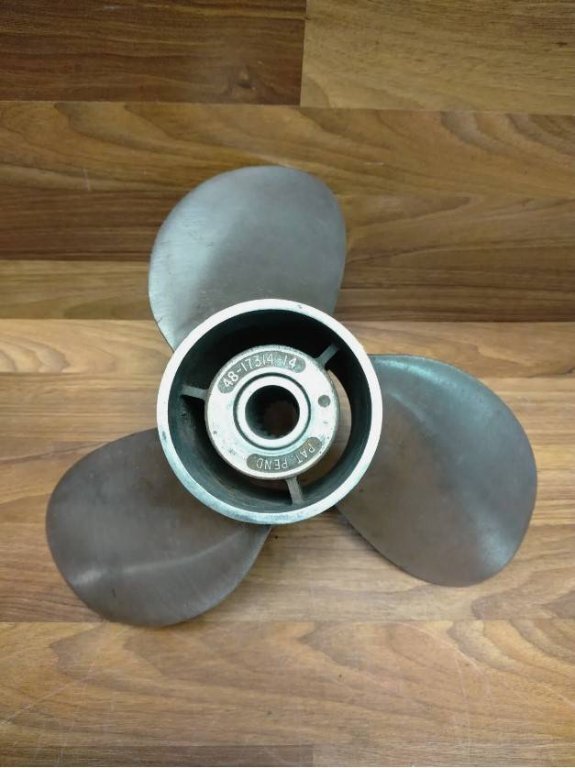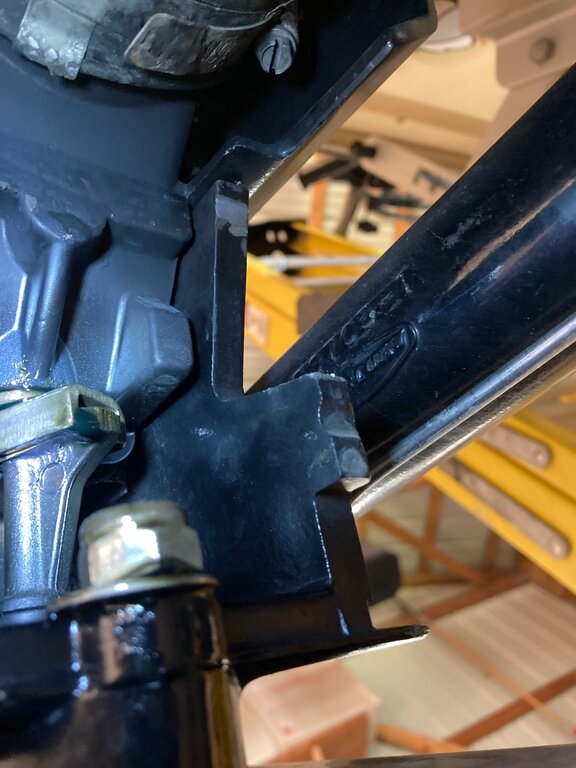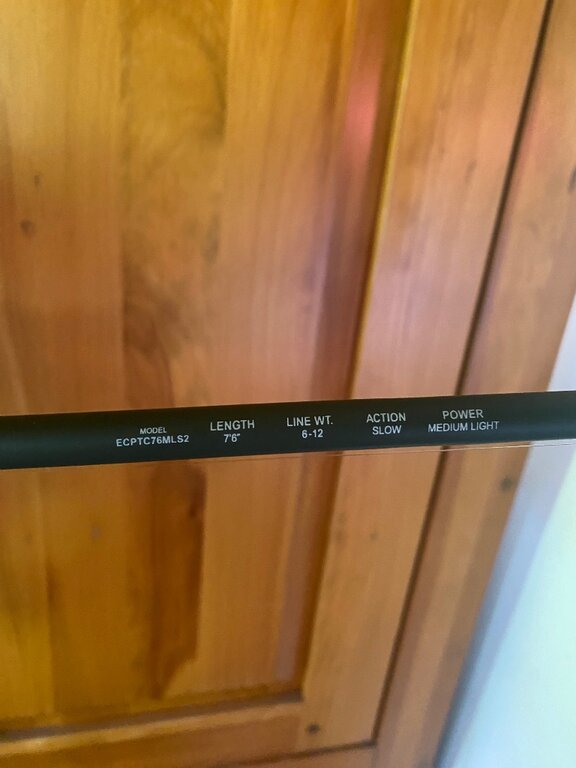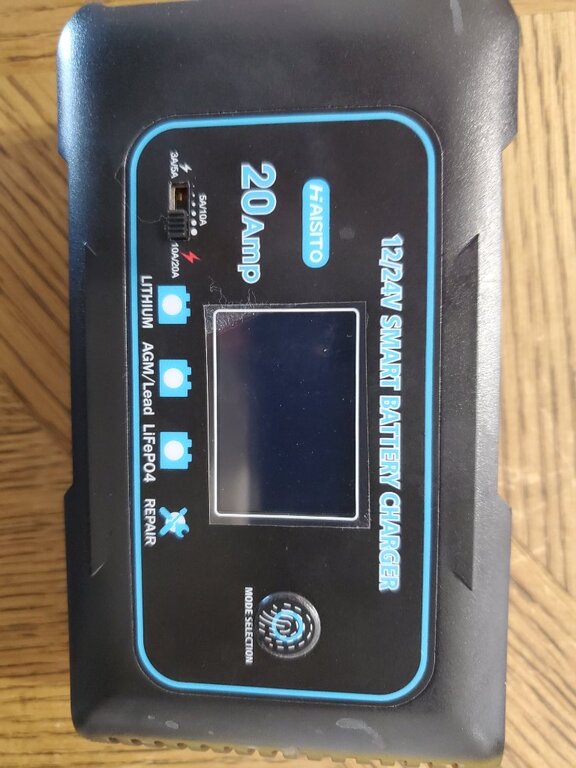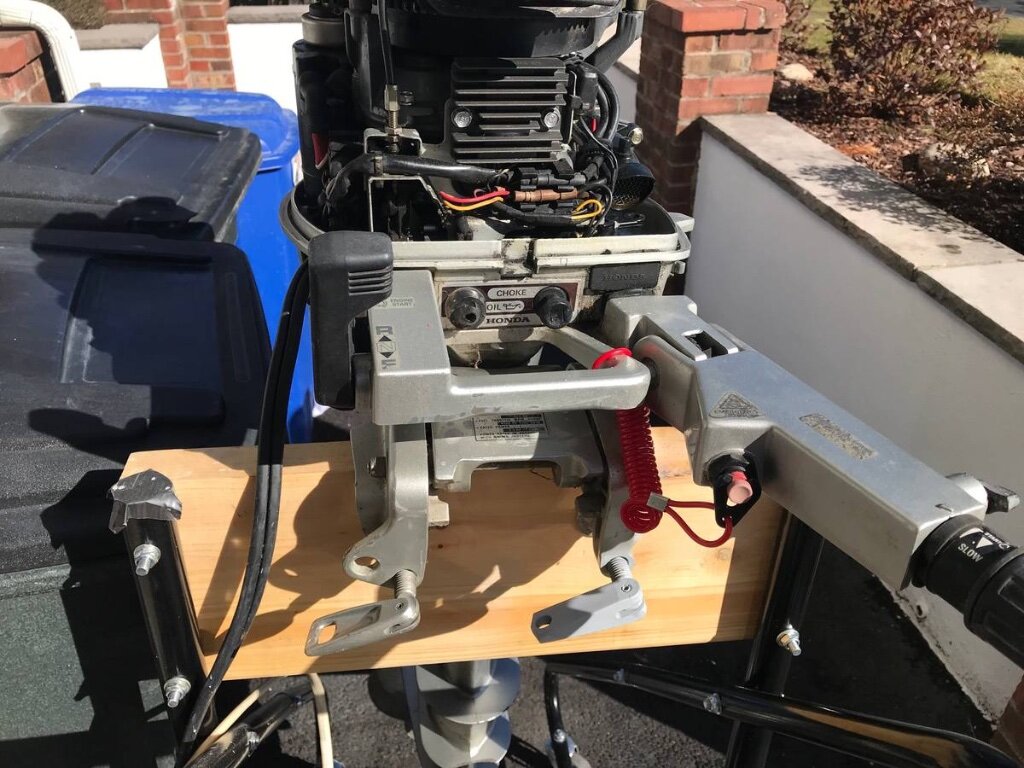
sherman brown
Members-
Posts
1,070 -
Joined
-
Last visited
Content Type
Profiles
Forums
Events
Gallery
Store
Everything posted by sherman brown
-

Sold / Closed MAGNUM SPOONS
sherman brown replied to emtystringer's topic in Classifieds - Buy, Sell, Trade or Rent
- 1 reply
-
- 1
-

-
when I started walleye fishing the central basin of Erie line counters were a must. my budget at the time was very little. i started with the Magda Pros but never liked them but I did catch fish with them. As soon as I could I upgraded to the Daiwa sealine sg17lca and the Accudepth plus 17lc reels that I bought used off eBay and they served me great for 15+ years. the accudepth was still working but I got a great deal on the sg17lc3b and upgraded. a few years later a couple of the sg17lca reels failed so I upgraded the Okume Coldwater 203 reels. these reel sizes are for walleye fishing. I run 3 divers on each side and to keep inexperienced people from letting out the wrong rod on the wrong side I like using the sg17lc3b reels on one side and the Coldwater's on the other side, and always get the rods set out on the right side. you don't have to buy all new reels at the same time, you can buy at your own pace 1 or 2 at a time when you find a good sale or good price. Convectors, Accudepth Plus, are both good mid grade reels. but the sglc3b reels are even better. so far I love the Coldwater reels they are as smooth as a baby's butt. but I haven't used them a lot so I can't say how good they are.
-

Sold / Closed 10# and 12# rigger weights
sherman brown replied to BrokeOff's topic in Classifieds - Buy, Sell, Trade or Rent
with priority mail shipping isn't much of a problem. just fit them into a small box actually you can get a box at the post office that's already priced for shipping they have different size boxes so just get the smallest box you can fit them in. The price for shipping doesn't change from the listed price as long as it weighs under 70# you can just stop by any post office and get the price and take the box with you so you can place the weights in and take back to any post office to ship. you would be doing me a plus if you would ship them to me. -

Sold / Closed 10# and 12# rigger weights
sherman brown replied to BrokeOff's topic in Classifieds - Buy, Sell, Trade or Rent
I want the fish shaped weights. I need them shipped in as small of a box they will fit in then ship them priority mail. that way they don't charge by weight but the size of the package. let me know what shipping will cost and I can pay the total plus an extra 5.00 for fees with PayPal. you can message me your PayPal info. -
-
first, decide if you want new or rebuilt. you can choose to change out the block. then go to michiganmotorz.com and you can check all your options. They carry short blocks without heads, long blocks with heads, plus complete motors new and rebuilt. just to switch to a mpi motor I recommend checking them out.
-

DW spoon afternoon
sherman brown replied to Morningdew's topic in New York Fishing Reports - Lake Ontario (South Shore)
-
-
-
I have been using them for 30+ years and never calibrated 1 yet. I just spool the same amount of line on each reel getting them close to full. I use the counter to get me back to the same spot I want to fish. if I let out 150' of line and get a fish I want my lure back as close to that spot as I can get, I have found with some line counters it's best to zero them each time before letting out line. many times my counters were on a half number and did not work, so I wouldn't know how much line was out. but now I try to remember to just reset my counter making sure it's on all zeros.
-
it doesn't hurt to upgrade the drags to start with. if you leave the drag tight when it's stored the washers are fixed at the position so you have no more adjustment on the drag. you should back the drags all the way off and let them set for a few days and then check them. for future reference when you are done fishing for the trip always back the drags all the way off for storage. I don't intend to offend you but like said above the Magda pro reels are the bottom of the list. you really should think about an upgrade. even if you replace 1 or 2 at a time you will be much better off. a convertor 30 is much better or a Daiwa accudepth plus 47, or Daiwa sealine sg47lc3b are all better choices. I walleye fish in the central basin of Erie and use small reels. I used the old accudepth plus 17lc for years and never had one fail me. but upgraded part of them with the old sealine sg17lca which serves me well. I upgraded part of them with the sealine sglc3b. then when I lost a couple of the old LCA reels I upgraded them with the Okuma Coldwater 203 reels. I love the coldwater reels they are the smoothest of the lot and the drags are great. but I've only used them for 2 week long trips to Erie. so I haven't used them enough to recommend them without adding a little salt. 10 years or more down the road then I will be able to say for sure. new washers should cure your problem. but you will still be using Magda reels.
-
you should have been able to tighten it enough that it wouldn't slip when turning. I have a Mercruiser outdrive to a 9.9 4-stroke Merc. and it steers great. I have my kicker mounted on a Panther tilt the only time it slips is when I tilt my kicker. and when I told the kicker down I have to turn my outdrive all the way over to correct the bar. I have a short bar for an outboard to outboard but it would be too short for an outdrive. I believe my bar is 39" closed and centered it just fits my kicker but my kicker bracket is turned slightly so it's centered with the outdrive.
-
they are the best you're going to find and they have more clearance than any others I've seen. I use them on my cannon riggers and the beads do get hung up at times. if I was still using the stops on mine I would try to use a end roller for a cannon rigger rigged in a way to retrieve my cable and still let the bead go through smoothly. but this is just 1 person's opinion.
-

Sold / Closed Stainless Steel Mercury Vengeance O/B prop 13.5" DIA X 14P in good condition $100/BO
sherman brown replied to 1lastweekend's topic in Classifieds - Buy, Sell, Trade or Rent
-

Sold / Closed Stainless Steel Mercury Vengeance O/B prop 13.5" DIA X 14P in good condition $100/BO
sherman brown replied to 1lastweekend's topic in Classifieds - Buy, Sell, Trade or Rent
-
-
I have always used 8' or longer ML downrigger rods and never had one that was too stiff for my riggers. a rod you should really check out is the Daiwa GX2 ugly stick med action on these rods are limber enough for riggers. but a light action might be a better option for you but not needed. I just took a quick look on eBay and 1 listing is for 3 light action 9' rods for 95.00 and free shipping.
-
-
have you removed the lower screw and checked to see if any water or milky grease came out? if just lower unit grease comes out close it up and put more grease in to make sure if it's low. I have had outdrives have what looks like the same thing but it turned out to be nothing but exhaust scum and water.
-

Sold / Closed Honda 9.9 hp long shaft, electric start, just serviced
sherman brown replied to cinnamon fish's topic in Classifieds - Buy, Sell, Trade or Rent
-
just go to eBay and search for shift cables for Honda outboard motors. I think the cables are interchangeable like the Mercury cables are. you might even add the length you want to your search. it should give you some options to buy both cables together. I'm using old 115 HP 2 stroke Mercury 1979 cables on my 2000 Mercury 9.9 4 stroke.
-
I don't know what channels to monitor on LO. On Erie, most guys use I think 79 on the west end and 68 on the central basin and east. but I check both of them and use 68 most of the time. back when I salmon fished Lake Michigan I used 68 there. another thing I like doing is putting my radio on scan then if guys switch channels to share info with a friend and not broadcast all over the place.
-
any time you're on big water I think it's foolish to not have a VHF radio just in case something breaks down and you need a tow or god forbid but if someone gets sick or has a bad injury you need to be able to contact the Coast Guard so they can have an ambulance waiting for you to get back to shore. I went the extra mile when I upgraded my 20-year-old radio. I bought one with the GPS already on it then registered it through BOATUS. now if I am sinking or have other problems I just push the big red button and they know everything about me and my boat.
-

for sale : usa FISHING RELATED ITEMS FOR SALE.
sherman brown posted a topic in Classifieds - Buy, Sell, Trade or Rent
I have an EGC-12 W GPS PUCK I will sell you for 12.00 plus shipping. if it turns out bad I will give you a full refund. I have an SS 19P HIGH FIVE PROP that is in great condition for 250.00 shipped to you. I have an electric Panther tilt for your kicker motor. these are a great tilt option for motors without the factory tilt. 475.,00 and I cover shipping. may add other items later. -
where were you at telling me this before I was skinned, or scammed? i did learn to not trust anyone but I learned the hard way. i had no idea that more scammers are on FB Marketplace than honest people. it's a gold mine for scammers.

